Orwell Astronomical Society (Ipswich)
Out Of Focus Images
It is often said that looking at a star through a telescope doesn't provide any information about the star because it's so far removed that it appears as a point of light no matter how much magnification is applied. But, on the other hand, an out of focus image of a star can often tell a great deal about the quality of the optics of the telescope.
A telescope which is optically perfect will produce an out of focus image of a bright star as a central disk, termed the Airy disk, surrounded by a set of concentric rings. The rings appear thinner and fainter the further they are from the centre. The Airy disk together with the rings is termed the Airy pattern. It is characterized by the wavelength of incident light and the aperture of the instrument and, in particular, the apparent size of the Airy disk is inversely proportional to the aperture of the telescope. The phenomenon is named after Sir George Airy, Seventh Astronomer Royal, who published the first full theoretical explanation of the phenomenon in 1835 [1].
The phenomenon was known before the time of Airy. Indeed, early telescope users thought that the size of a star was related to the size of the Airy disk which it produced. However, when results demonstrated that the size of the disk was determined by the aperture of the telescope, the fallacy was highlighted.
If the telescope optics are imperfect, a variety of distortions can be introduced in the Airy pattern. These include:
- flaring,
- mis-shaping,
- barring,
- missing rings,
- obscuration of centre of image.
In addition, short focal ratio telescopes can suffer from coma, whereby star images close to the edge of the field of view suffer a radial distortion, with images on opposite ends of a diameter of the field being distorted in opposite directions. This can be overcome with a "coma corrector" lens.
Before using an out of focus image to assess the optical quality of a telescope, allow the instrument to acclimatise for at least 30 minutes. Use a star at, or near, the zenith to minimise atmospheric distortion. Use an eyepiece that produces a magnification of approximately 1.4x per millimetre of aperture.
The following table illustrates the effect of common optical defects on the Airy pattern.
| Impairment |
Description |
Example |
| Correct figure of lens and adjustment: no impairment |
Tiny central disc surrounded by perfectly circular rings of diminishing brightness |
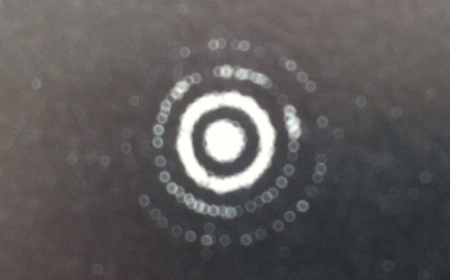 |
| Gross misalignment |
Diffraction rings displaced to one side |
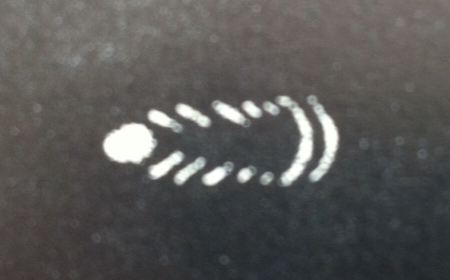 |
| Minor misalignment |
Diffraction rings displaced to one side |
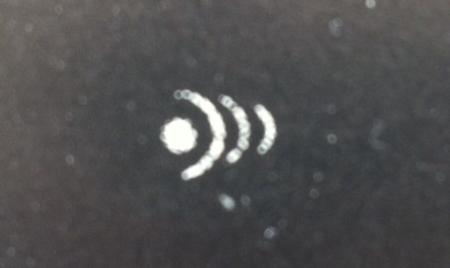 |
| Astigmatism |
Central disc is oval rather than circular, axis changes either side of focus |
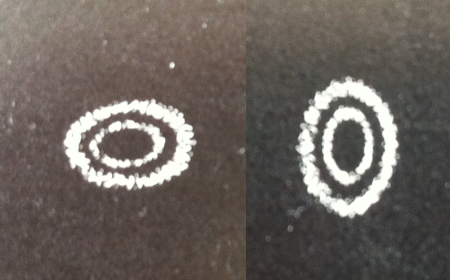 |
| Zonal aberration |
Diffraction rings of inconsistent brightness |
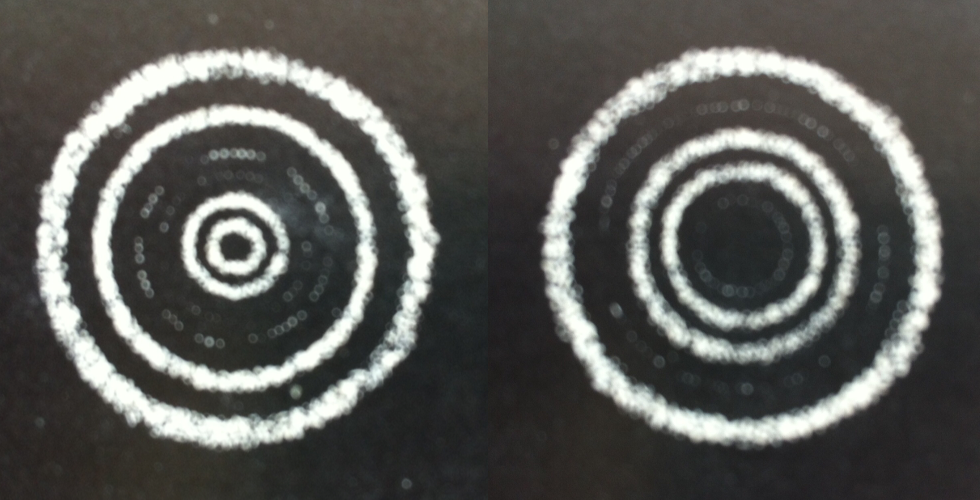 |
| Mechanical strain |
Distorted diffraction rings |
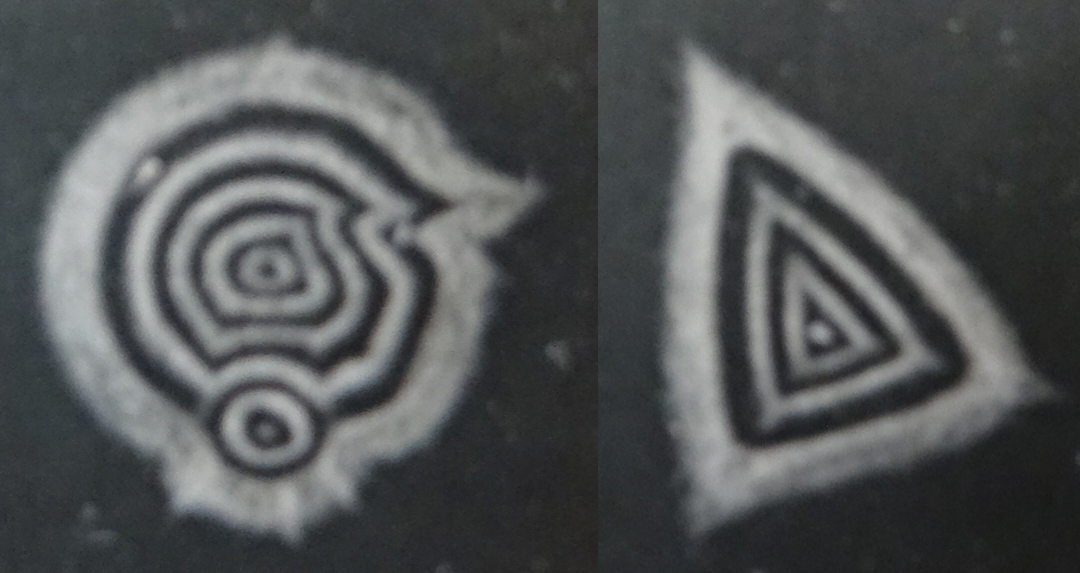 |
| Objective inadequately supported |
Diffraction rings appear in sectors |
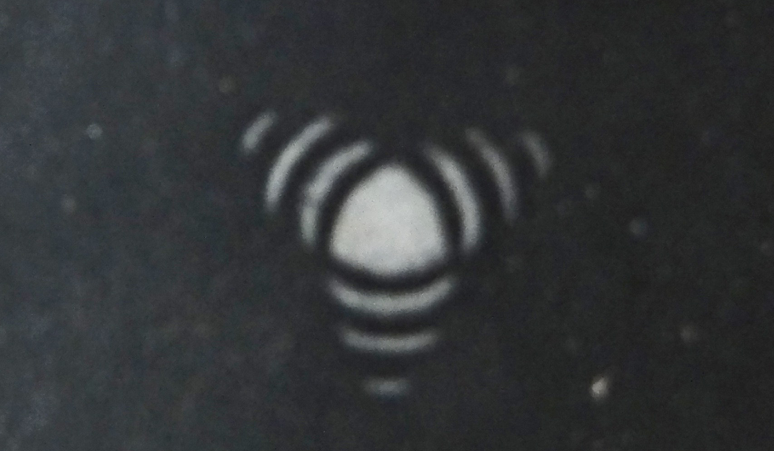 |
Reference
G B Airy, On the Diffraction of an Object-glass with Circular Aperture, Transactions of the Cambridge Philosophical Society, vol. 5, pp. 283-291, 1835.
Bill Barton, FRAS






